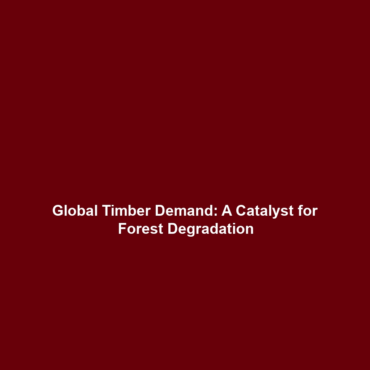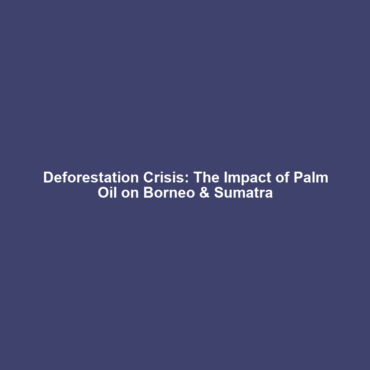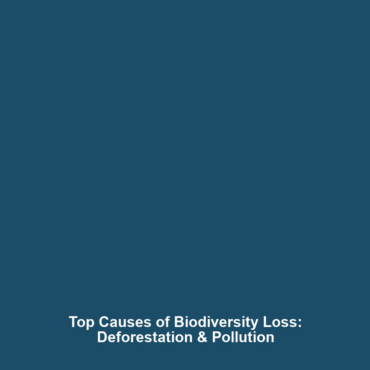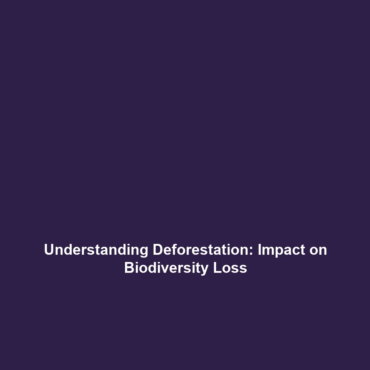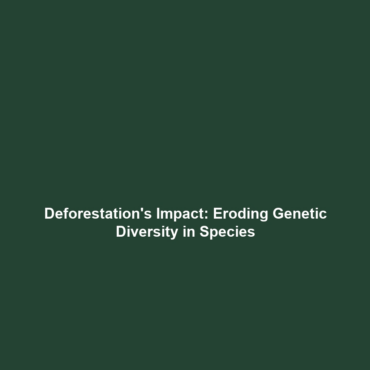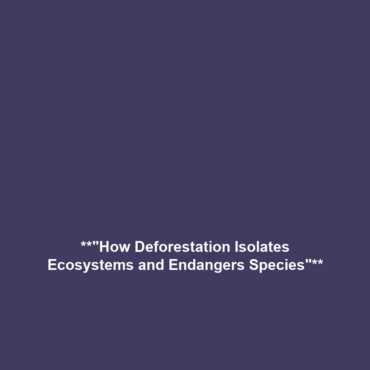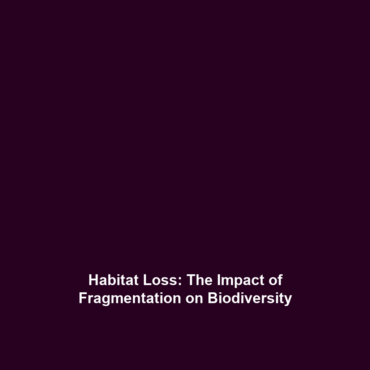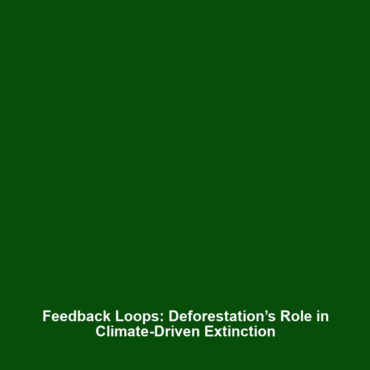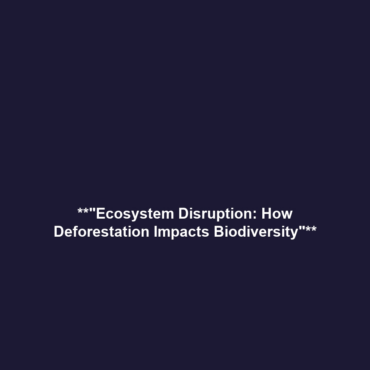The Role of Global Demand for Timber, Paper, and Wood-Based Products in Forest Degradation
The significant global demand for timber, paper, and wood-based products plays a crucial role in the degradation of forests, which in turn exacerbates deforestation and biodiversity loss. As economies expand and the consumption of these resources increases, the pressure on forest ecosystems intensifies. Understanding the dynamics of this relationship is essential for fostering sustainable practices that protect our planet’s forests and the diverse life they support.
Key Concepts
In examining the role of global demand for timber, paper, and wood-based products in forest degradation, several key concepts emerge:
1. Timber Production and Deforestation
Timber logging is one of the primary drivers of deforestation, with substantial quantities harvested each year to meet global demand. This unsustainable practice leads to habitat loss, which significantly impacts biodiversity.
2. Paper Industry Impact
The paper industry significantly contributes to forest degradation, requiring vast amounts of wood pulp that often results in irreversible ecological changes.
3. Wood-Based Products
From furniture to packaging, the demand for various wood-based products fuels unsustainable forest management practices, jeopardizing ecosystem health and species survival.
Applications and Real-World Uses
The implications of the global demand for timber, paper, and wood-based products have substantial real-world applications within the context of deforestation and biodiversity loss. Some significant applications include:
- Construction Materials: Sustainable alternatives can mitigate the detrimental effects of timber sourcing.
- Recycling Initiatives: Promoting recycled paper products reduces demand for virgin resources, aiding forest conservation.
- Eco-Friendly Products: Developing wood substitutes can decrease pressure on natural forests.
Current Challenges
Despite the awareness of the adverse effects associated with global demand for timber and wood products, several challenges hinder effective progress:
- Legislation Gaps: Weak regulations surrounding logging practices lead to illegal deforestation.
- Consumer Awareness: A lack of understanding about sustainable products diminishes demand for eco-friendly alternatives.
- Market Dynamics: The cost of sustainably sourced products often exceeds cheaper alternatives, deterring consumers and industries alike.
Future Research and Innovations
The future of combating deforestation and biodiversity loss associated with timber and wood product demand lies in innovative research and technologies. Potential areas for advancement include:
- Biotechnology: Development of genetically modified trees that grow faster and can be harvested sustainably.
- Remote Sensing: Using satellite technology for real-time forest monitoring and management.
- Alternative Materials: Advancements in creating synthetic and biodegradable alternatives to conventional wood products.
Conclusion
In summary, the global demand for timber, paper, and wood-based products substantially contributes to forest degradation, posing significant risks to biodiversity and environmental health. Addressing these challenges through sustainable practices is vital for the future. We encourage further exploration of sustainable resources and responsible consumption to protect our forests. For more information on the topic, check out our resources on deforestation and biodiversity loss.
